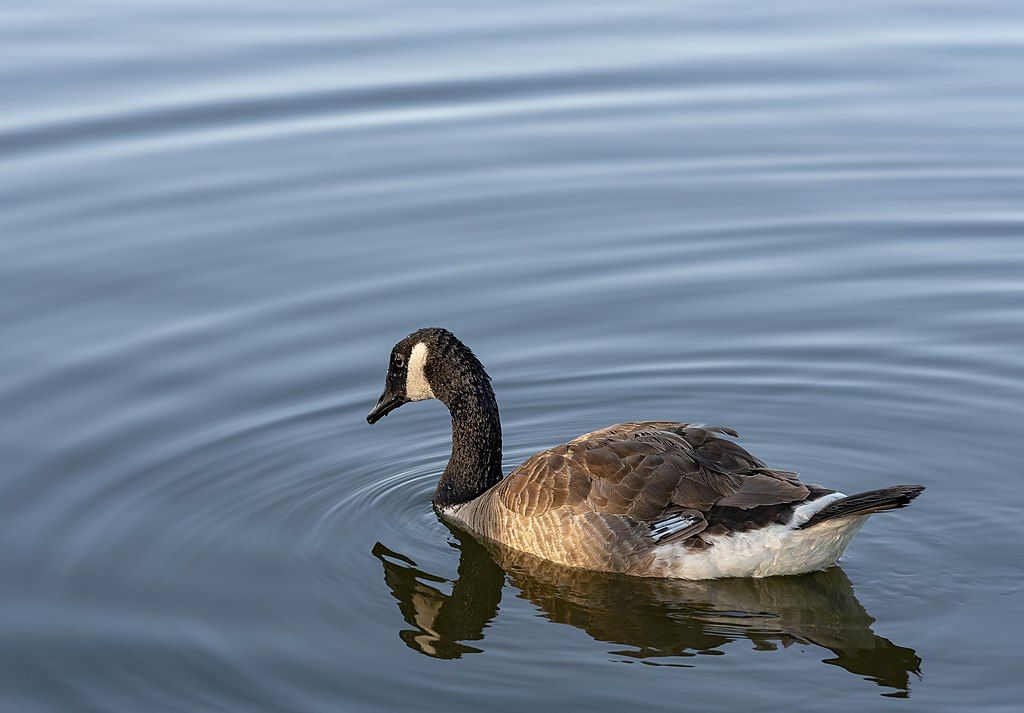
14 June 2023
Once a year, from late June until August, Canada geese spend six weeks molting all their wing feathers. This means they can’t fly in July, nor even in late June.
On a walk at Herrs Island yesterday I saw many Canada geese swimming in the river and a few of their primary feathers — the “fingertip” feathers — scattered on shore. At first I wondered if a goose had been attacked and then I realized the feathers were a sign of their synchronous molt. Here’s a snapshot from a similar discovery made by Rebecca Johnson in 2020. (Click on the snapshot to see her video on YouTube.)
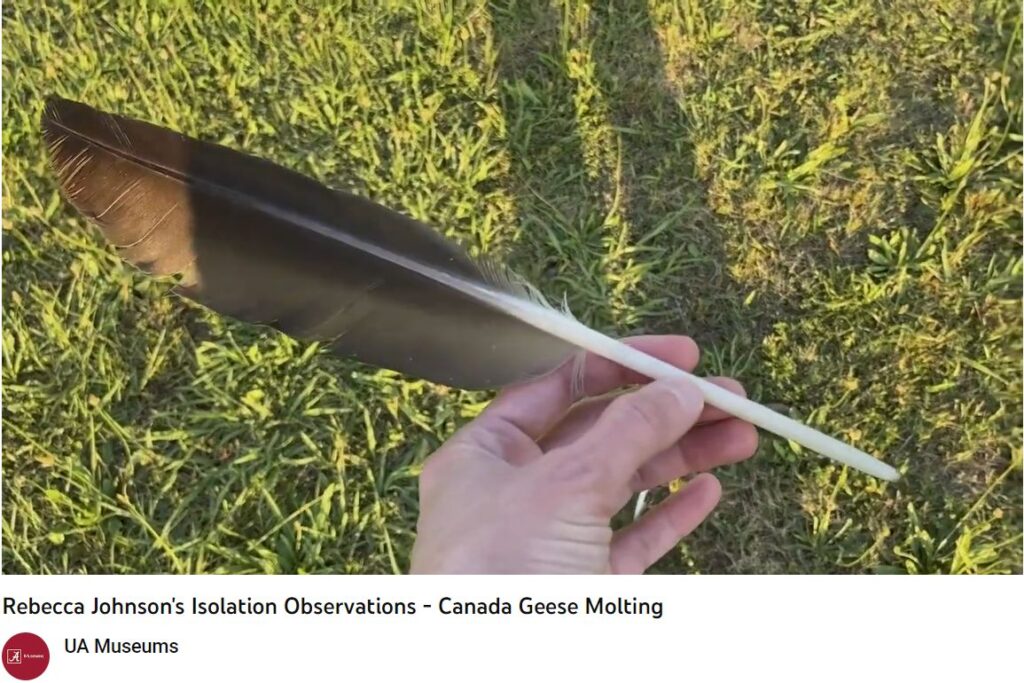
Even if you don’t see discarded wing feathers you can tell a Canada goose is molting because its white rump is visible above the dark tail. It’s really noticeable from above.
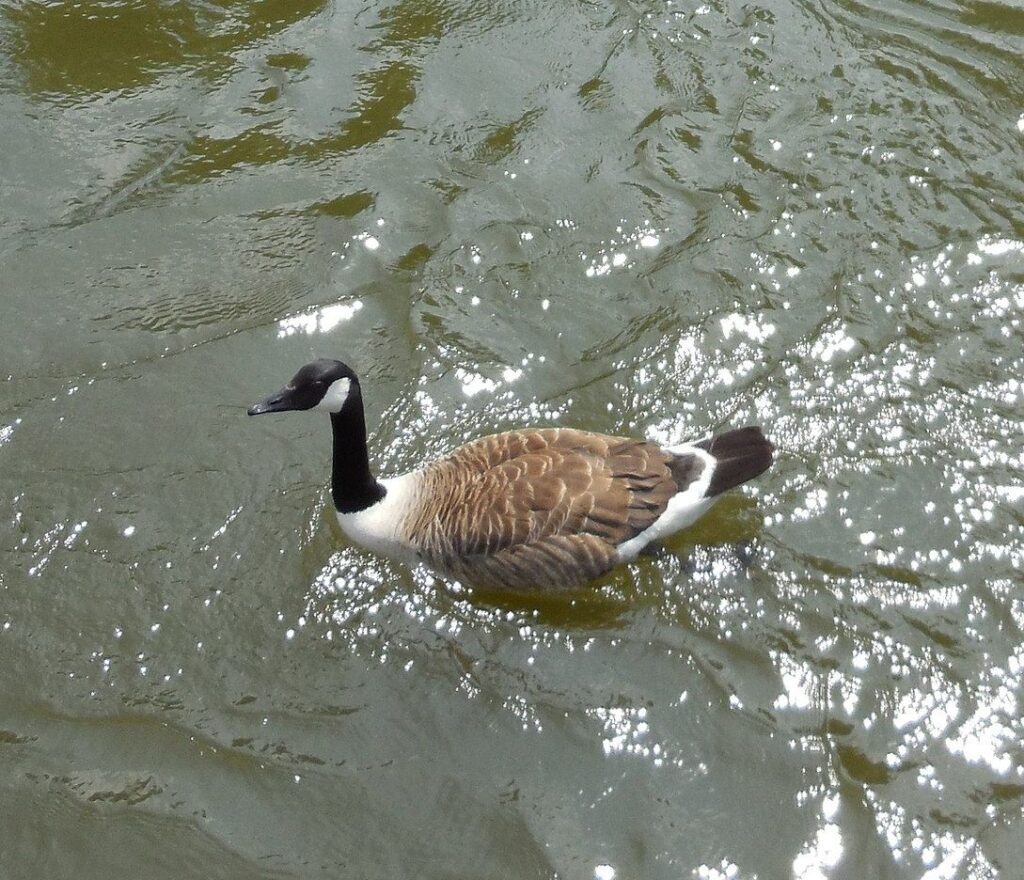
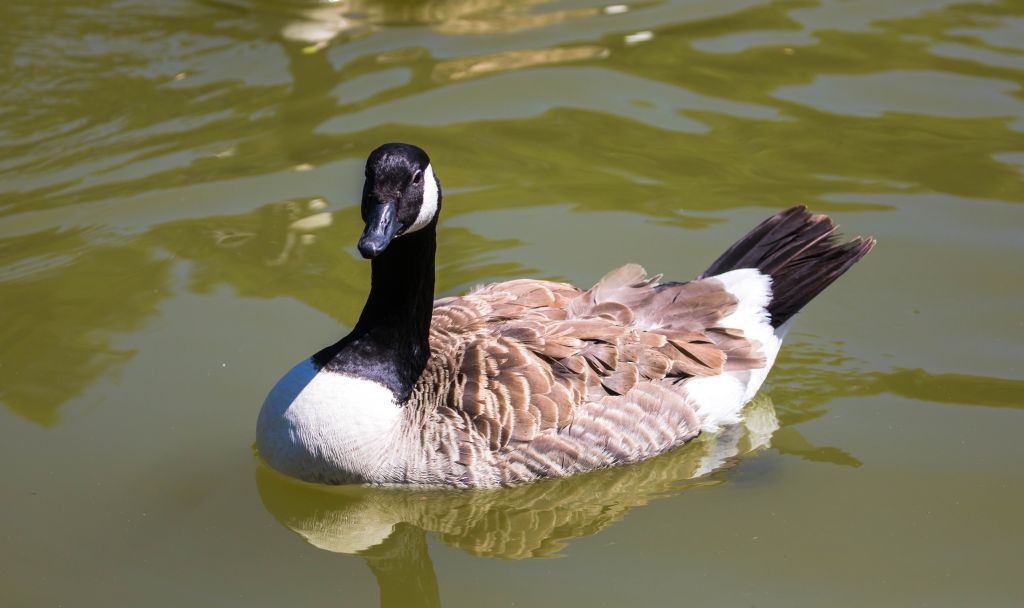
Sometimes you can see the pin feathers coming in. This marked up photo highlights the pin feathers and visible white rump.
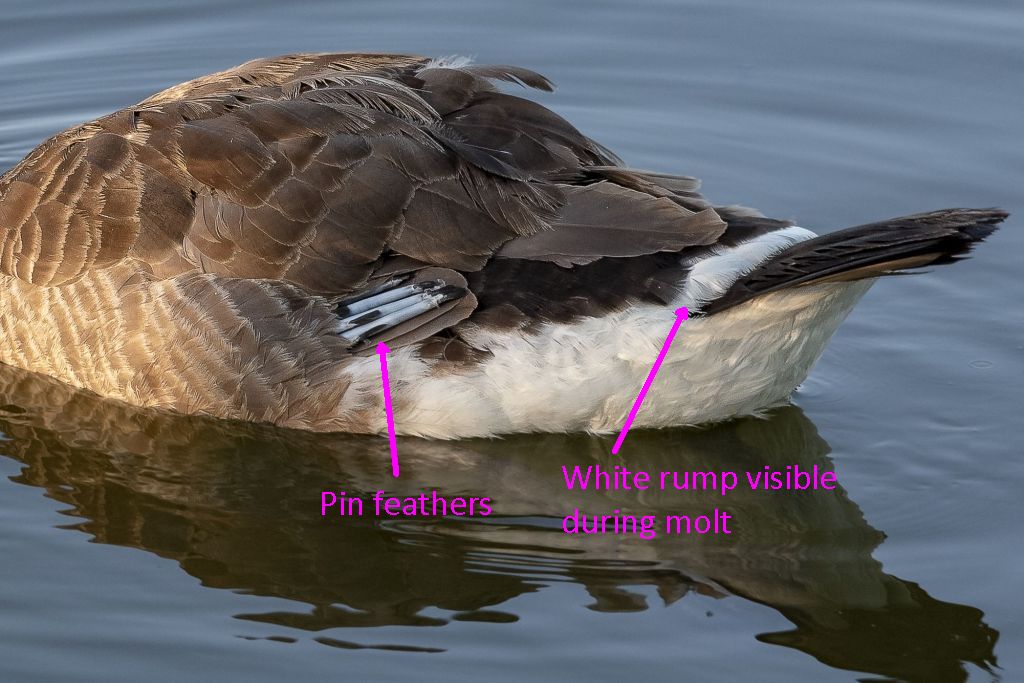
In late June and July when they cannot fly Canada geese are safe only in water. You’ll see them feeding just a short walk from a large body of water and notably absent from landlocked places.
When they can fly again, their tails will look like this when their wings are closed.
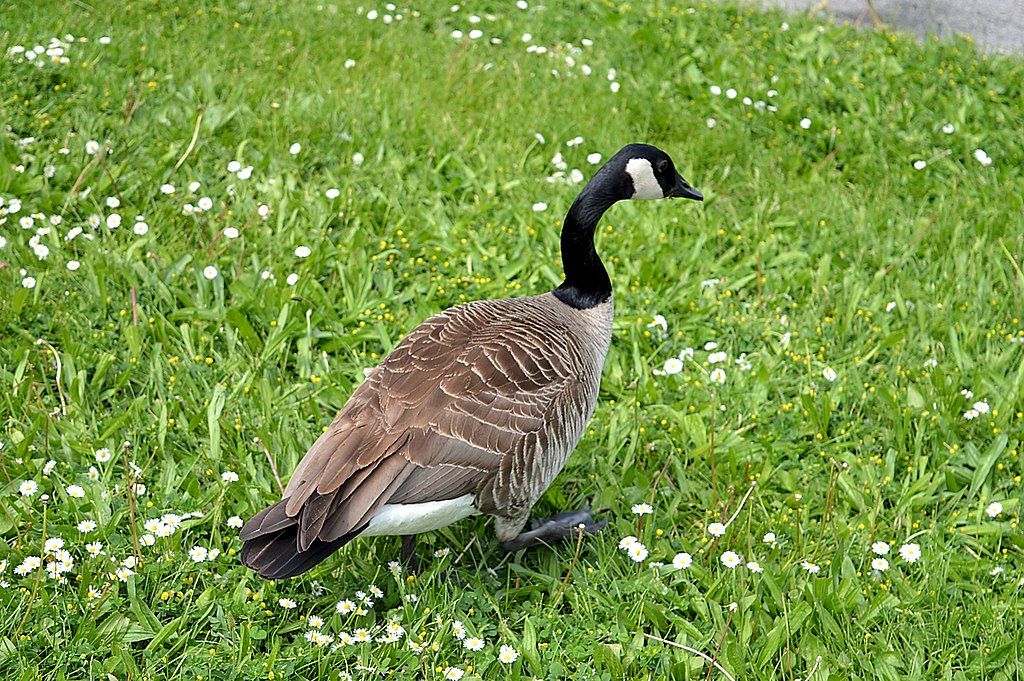
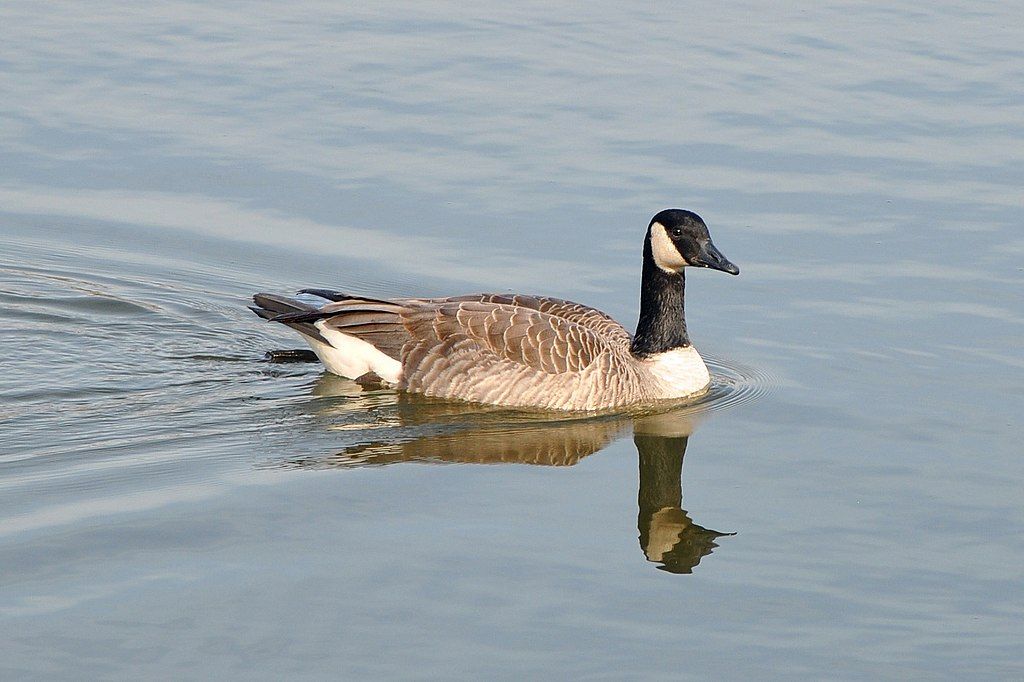
Have you noticed Canada geese avoiding people lately? They aren’t as bold when they can’t fly in late June and July.
(photos from Wikimedia Commons, wing feather snapshot from Rebecca Johnson’s UA Museums video on YouTube)
p.s. There’s a theory that this type of wing molt led to flightless birds in locations where threats were low. Read more about it at: Simultaneous wing molt as a catalyst for the evolution of flightlessness in birds.
You know, I heard this before, and it was probably from you. However, this is just such an interesting and informative post. Thanks so much, Kate. Have a good day!